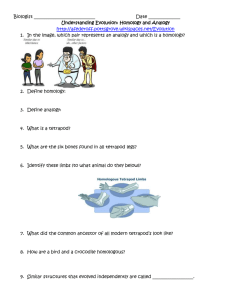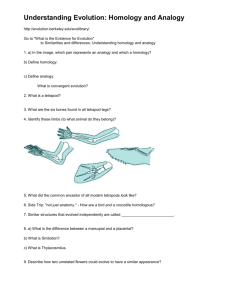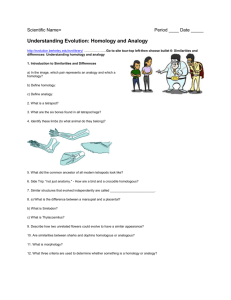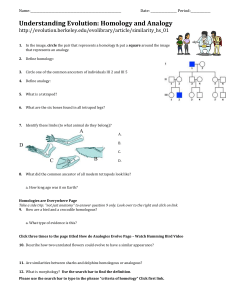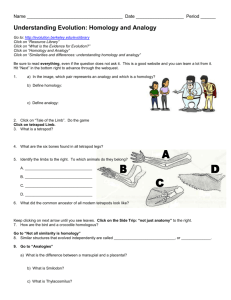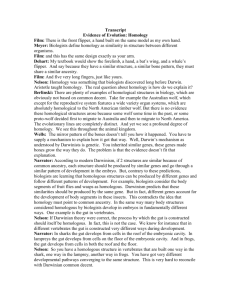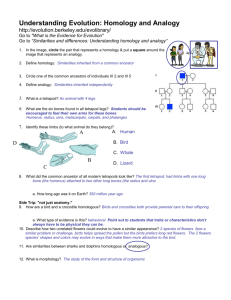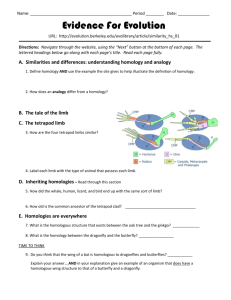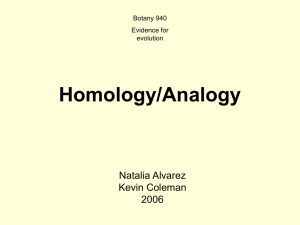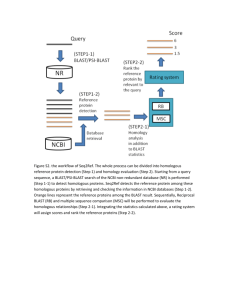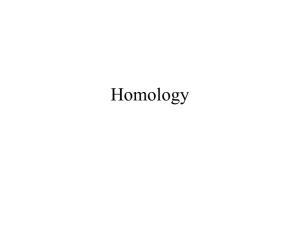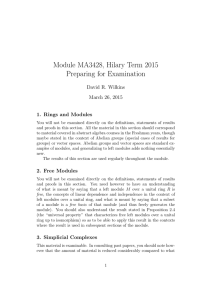Name - Quia
advertisement
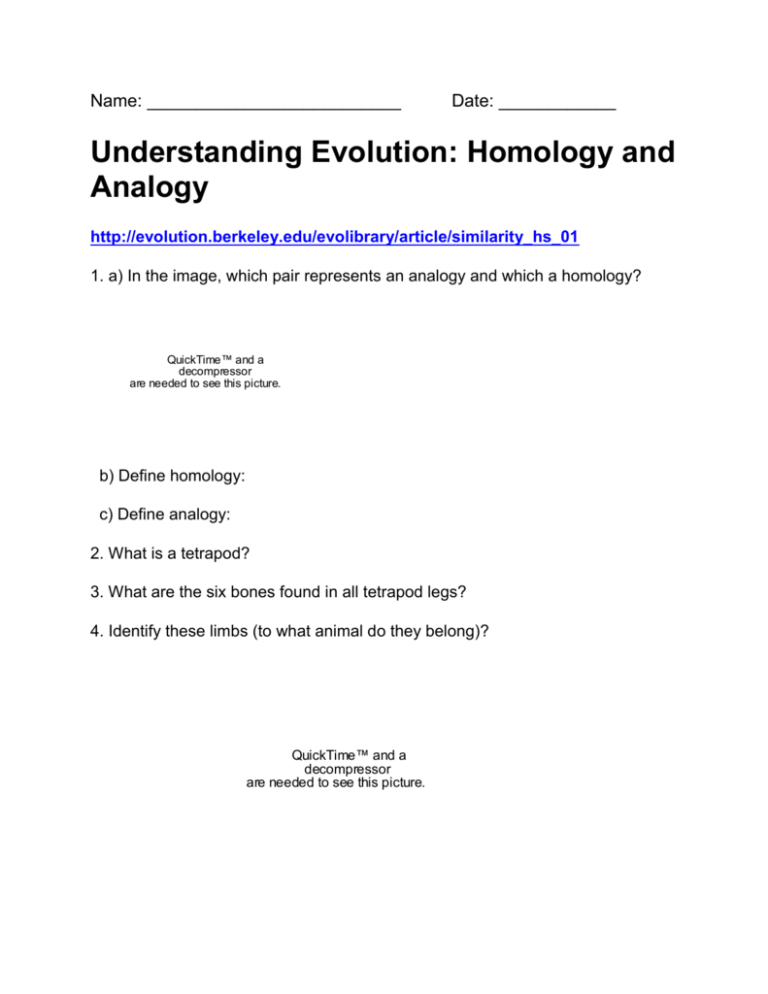
Name: __________________________ Date: ____________ Understanding Evolution: Homology and Analogy http://evolution.berkeley.edu/evolibrary/article/similarity_hs_01 1. a) In the image, which pair represents an analogy and which a homology? QuickTime™ and a decompressor are needed to see this picture. b) Define homology: c) Define analogy: 2. What is a tetrapod? 3. What are the six bones found in all tetrapod legs? 4. Identify these limbs (to what animal do they belong)? QuickTime™ and a decompressor are needed to see this picture. 5. What did the proposed common ancestor of all modern tetrapods look like? 6. Side Trip: "not just anatomy." - How are a bird and a crocodile homologous? 7. Similar structures that evolved independently are called _________________________. 8. a) What is the difference between a marsupial and a placental? b) What is Smilodon? c) What is Thylacosmilus, 9. Describe how two unrelated flowers could evolve to have a similar appearance? 10. Are similarities between sharks and dolphins homologous or analogous? 11. What is morphology? 12. What three criteria are used to determine whether something is homology or analogy? 13. Fill in the blanks of the primate tree. QuickTime™ and a decompressor are needed to see this picture. 14. Considering all of the evidence, are the "wings" (actually flaps of skin stretched between the legs) of sugar gliders and flying squirrels homologous or analogous structures? Explain why you would conclude this. 15. Sidetrip: See more examples of homology and examples of analogy. a) How are a venus fly trap and a pitcher plant homologous? b) How are barnacles and limpets alike? How can these similarities be explained? Now, go to the class website and watch the video labeled Homology: http://www.quia.com/pages/tigerbiology.html 16. Fruit flies and wasp segments are considered homologous. How do the genes of these 2 organisms contradict the idea that homology must point to common ancestry 17. If homology is to be a valid evidence of evolution, what should we see in the embryological development of these homologous structures? 18. How does the embryonic development of the vertebrate gut differ in a shark, a lamprey and a frog? How does this contradict the idea of homology here pointing to common ancestry?
